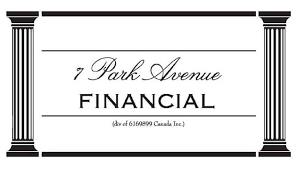|
Revolutionize Your Cash Flow: The Power of Working Capital Loans
Bridging Financial Gaps: How Working Capital Loans Can Help
You Are Looking for Working Capital Loans!
Maximizing Business Growth: The Role of Working Capital Loans
You've arrived at the right address! Welcome to 7 Park Avenue Financial
Financing & Cash flow are the biggest issues facing business today
Unaware / Dissatisfied with your financing options?
Call Now! - Direct Line - 416 319 5769 - Let's talk or arrange a meeting to discuss your needs
Email - sprokop@7parkavenuefinancial.com

Explore this comprehensive guide on working capital loans because it reveals how smart financing can be your business's growth catalyst, even in uncertain times
Introduction to Working Capital Loans
The shock has probably worn off by now. We're referring of course to the business owner and financial manager's realization that sales don’t equal cash flow and that your management of working capital might just be your key to short and long-term survival.
In the dynamic world of business finance, the concept of working capital loans stands as a cornerstone, pivotal to the sustenance and growth of enterprises, both big and small.
At the heart of successful business operations lies the effective management of working capital – the lifeblood that keeps the wheels of commerce turning. This article delves into the intricate world of working capital loans, a tool that can be a game-changer for businesses grappling with the ebb and flow of operational cash flow.
Working capital loans are not just financial instruments; they are vital lifelines that enable businesses to harness opportunities and navigate through the unpredictable seas of market demands and economic fluctuations. By providing the necessary funds to bridge the gap between current liabilities and assets, these loans empower businesses to maintain operational efficiency, invest in growth opportunities, and ensure financial stability in the face of seasonal sales variations or unexpected expenses.
Have you ever considered how the strategic utilization of working capital loans could transform your business's financial landscape, turning challenges into lucrative opportunities? Unlocking the potential of your business with a working capital loan is akin to finding the master key that opens doors to endless growth and sustainability opportunities
Choosing the Right Financial Solution
So what type of finance company or institution can help you in the access to liquidity? The reality is that every industry needs a different level of working capital. That relationship of your assets to your turnover to your cash on hand is what is going to make the final call on what type of loans you might need for your cash flow management solution.
Considering Non-Loan Solutions
And we will add that you might find that 'loans' or bringing on additional debt to your balance sheet is not only the wrong solution, but you have alternative non-loan solutions!
The Core of Working Capital Management
The reason you are looking at your working capital situation hinges probably in two areas, your firm is growing too quickly, or you have asset management challenges or problems with inventory and receivables. So hopefully you can now see that what working capital management is all about comes down to matching the financing you need to the assets and equity you have on your balance sheet. As your business and profits grow the owner equity component grows also.
Assessing Loans as a Solution
So, are loans the solution to your cash flow challenge (or crisis!)? Sometimes, but definitely not all the time. The long-term solution to a cash flow management solution might in fact be a working capital term loan, in effect injecting long-term capital into your business.
Understanding Working Capital Term Loans
If you can qualify for this loan, which is more often than not unsecured, it certainly is an option. Larger loans of this nature are called subordinated debt, but cash flow term loans are available for almost all firms - generally, the minimum being 50k, but as we noted, going to several million dollars depending on the size of your firm.
Alternative In-Business Solutions
But why would you borrow externally and bring debt onto your balance sheet when the solution is inside your business, not outside? Clients are often surprised when they find out that two other solutions, and not loans, are possible.
Exploring Asset-Based Lines of Credit
We're talking about asset-based lines of credit, which are generally non-bank in nature, meaning they are offered by private finance firms. Rates on such facilities can be competitive to bank rates, but more often than not come at a premium.
The Power of Receivables Financing
The other solution we will mention is the sales of receivables. This type of financing brings zero new debt onto your balance sheet, improves your cash position, and provides immediate cash flow for growth.
Contrary to popular belief, frequently relying on working capital loans does not necessarily signify poor financial health; instead, it can be a savvy indication of a business’s agility and foresight in capitalizing on immediate opportunities for growth and expansion
Key Takeaways
-
Working Capital Loans are essentially short-term financial instruments designed to bridge the gap in a business's daily operational expenses. They provide the liquidity needed to manage day-to-day operations, such as paying suppliers or employees, without relying on long-term debt or equity financing.
-
Qualification Criteria: Understanding the requirements to obtain such a loan is crucial. Typically, lenders evaluate a business's creditworthiness, financial health, and cash flow history. This assessment ensures that only businesses with a sound track record and reliable revenue streams secure these loans.
-
Impact on Cash Flow: Working capital loans are pivotal in maintaining a healthy cash flow. By offering immediate funds, they prevent disruptions in operations that can arise from cash shortages, thereby enabling continuous business activities and growth opportunities.
-
Types of Loans: Familiarizing oneself with the different types of working capital loans is important. Options include lines of credit, short-term loans, invoice financing, and merchant cash advances, each catering to the specific needs and circumstances of a business.
-
Strategic Use and Repayment: Effective utilization of these loans involves using the funds for intended operational purposes and not for long-term investments. Timely repayment is equally important to avoid accruing high interest and to maintain good credit standing, which is essential for future financial endeavours.
Conclusion: A Spectrum of Solutions
In summary, working capital loans can come from external finance company sources. Alternatively, you can become your own finance company by managing and monetizing your assets in a variety of ways.
Call 7 Park Avenue Financial,a trusted, credible and experienced Canadian business advisor to determine which solutions work best for your firm.
FAQ
What exactly is a working capital loan?
A working capital loan is a short-term loan used to finance a company's everyday operations, such as paying salaries or purchasing inventory.
A working capital loan is a financial tool designed to support a company's daily operational expenses. This type of loan is not intended for purchasing long-term assets or investments; rather, it serves to fund immediate operational needs such as payroll, rent, and debt obligations. Essentially, it's a form of corporate debt used to sustain day-to-day business activities.
- The primary purpose of a working capital loan is to finance the routine operations of a company.
- These loans are geared towards addressing short-term operational requirements, not for acquiring long-term assets or investments.
- Businesses experiencing seasonal sales fluctuations or cyclical revenue patterns often utilize working capital loans during periods of decreased business activity.
- The creditworthiness of the business owner can be directly linked to these loans, meaning any missed payments or defaults could negatively impact their personal credit score.
How can a working capital loan benefit my business?
It provides quick access to funds, ensuring smooth operation and allowing you to capitalize on growth opportunities without disrupting cash flow.
Are working capital loans difficult to qualify for?
Qualification depends on your business's financial health and credit history. Strong cash flow and creditworthiness typically make it easier to qualify when a business needs to address negative working capital and is unable to access a bank line of credit.
Can startups apply for working capital loans?
Yes, startups can apply for a short term business loan, but they may need to demonstrate strong potential for revenue and a solid business plan to be considered.
How does a working capital loan impact my business's credit?
Responsible use and timely repayment can positively impact your credit score, while misuse or late payments can harm your credit standing.
What's the typical interest rate on a working capital loan?
Interest rates vary based on the lender and your business's credit profile, but they generally range from moderate to high.
Is collateral required for these loans?
Some working capital loans are unsecured and don’t require collateral, while others may require it, depending on the loan type and amount.
How quickly can I access funds from a working capital loan?
It varies by lender, but some can provide funds within a few days of approval. Some companies use business credit cards for short term purchases or to fund accounts payable.
Can I use a working capital loan to pay off other debts?
While possible, it’s advisable to use these loans for operational expenses to avoid financial strain.
Are there restrictions on how I can use a working capital loan?
Generally, these loans should be used for short-term operational needs, though specific terms may vary by lender.
What are the pros and cons of working capital loan financing?
One of the primary advantages of working capital loans is their accessibility; they can be obtained relatively easily, allowing business owners to promptly address any shortfalls in working capital expenditures.
Another significant advantage is that these loans are a form of debt financing, meaning they do not necessitate an equity transaction. This allows business owners to retain complete control over their company, even in times of urgent financial need.
Many working capital loans are offered without the need for collateral, especially to companies or business owners with robust credit ratings. However, for businesses with limited or no credit history, securing the loan may require collateral.
On the downside, working capital loans that require asset collateral can introduce complications. Additionally, these loans often come with higher interest rates as a way for lenders to offset their risk. Moreover, since working capital loans can be linked to the personal credit of the business owner, any missed payments or defaults could adversely affect the business owner's personal credit.

' Canadian Business Financing With The Intelligent Use Of Experience '
STAN PROKOP
7 Park Avenue Financial/Copyright/2024

Stan Prokop is the founder of 7 Park Avenue Financial and a recognized expert on Canadian Business Financing. Since 2004 Stan has helped hundreds of small, medium and large organizations achieve the financing they need to survive and grow. He has decades of credit and lending experience working for firms such as Hewlett Packard / Cable & Wireless / Ashland Oil
|